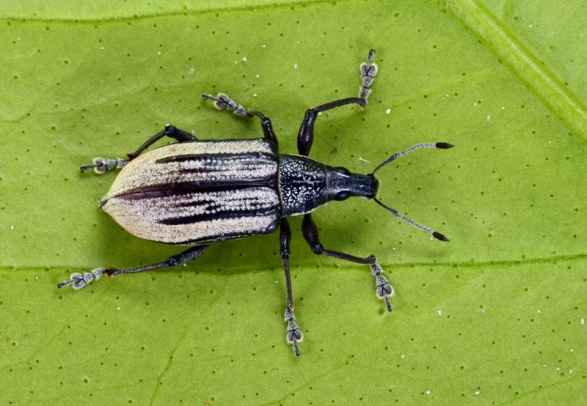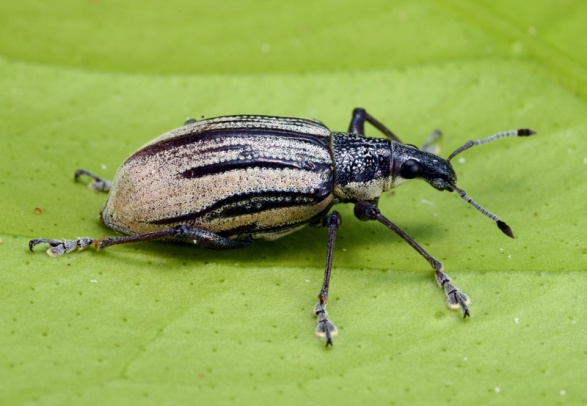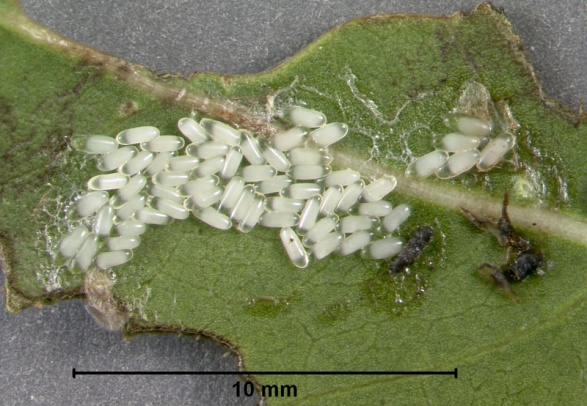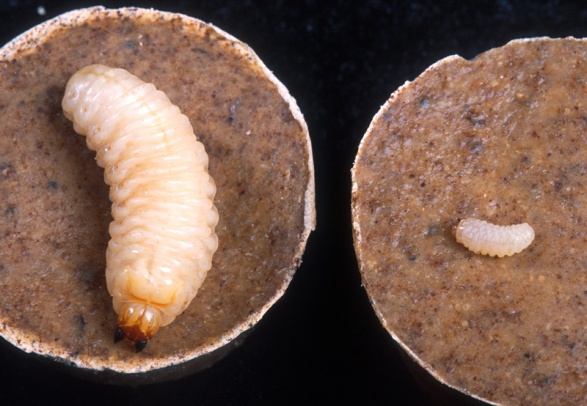
Diaprepes root weevil
Diaprepes abbreviatus (Linnaeus)
(Insecta: Coleoptera: Curculionidae)
Adult weevils measure from 0.95 to 1.90 cm in length. Their bodies, antennae, and legs are black. Elytra (forewings) are covered partially with small white, reddish-orange and yellow scales. Larvae are creamy white, legless grubs that grow to be 2.5 cm long. Eggs are smooth, shiny, pale yellow, and oval oblong (about 1.2 mm long).
Completion of the life cycle may take up to a year. Adults, feeding on foliage, live three to four months, and each female may produce up to 5,000 eggs that are laid in clusters of 30 to 265. Eggs are embedded in a sticky gel that glues leaves together. Hatching larvae fall off the leaves, burrow into the soil, and start feeding on the roots for several months. After pupation, adults emerge from the soil.
Native to the Caribbean, Diaprepes root weevil first was reported in Florida in 1964 at a nursery near Apopka. It now is found in most of the citrus-growing areas of central and southern Florida.
Diaprepes abbreviatus is damaging to a wide range of citrus and ornamental plants.
Images
To
save the Web-optimized images shown below to your hard drive:
PC users: right click to "Save Picture (or Image) As..."
Mac users: click and drag to your desktop.

Dorsal view of adult Diaprepes root weevil, Diaprepes abbreviatus (Linnaeus)
(Photographer: Lyle Buss, University of Florida)

Lateral view of adult Diaprepes root weevil, Diaprepes abbreviatus (Linnaeus)
(Photographer: Lyle Buss, University of Florida)

Eggs of Diaprepes root weevil, Diaprepes abbreviatus (Linnaeus)
(Photographer: Lyle Buss, University of Florida)

Different instars of Diaprepes root weevil, Diaprepes abbreviatus (Linnaeus) on artificial diet
(Photographer: Peggy Greb, USDA Agricultural Research Service, Bugwood.org, with permission 2013-09-12)